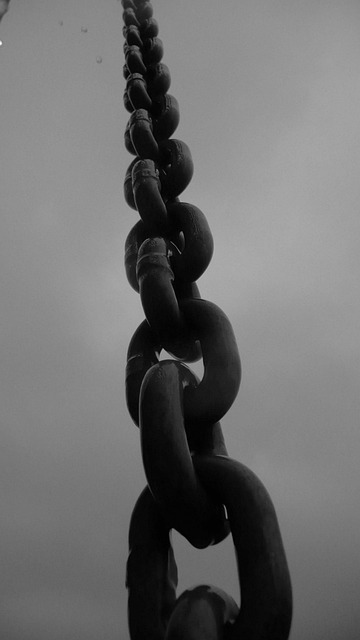TL;DR:
Loopholes in DUI legislation, including outdated BAC limits, lenient penalties for repeat offenders, and inconsistent court interpretations, hinder effective prosecution and create a cycle of recurring offenses. These gaps foster insecurity among citizens, promote reckless driving, burden rehabilitation centers and law enforcement, and ultimately endanger public safety. Comprehensive legal reforms are necessary to address these loopholes and ensure more consistent, just outcomes in DUI cases.
In the pursuit of safer communities, understanding high-risk reoffenders, particularly those involved in DUI (driving under the influence), is paramount. This article delves into the intricate web of loopholes in DUI legislation, examining their profound impact on society. We present a comprehensive analysis, highlighting the gaps that enable recurring offenses. By exploring real-world consequences, we advocate for strategic solutions to close these loopholes and foster justice. Furthermore, future directions focus on reforms aimed at breaking the cycle of reoffending, ultimately enhancing community safety.
- Understanding High-Risk Reoffenders and DUI Legislation
- Loopholes in Current Laws: A Comprehensive Analysis
- Real-World Impact of Legislative Gaps on Society
- Strategies to Close Loopholes and Enhance Justice
- Future Directions: Reforms for a Safer Community
Understanding High-Risk Reoffenders and DUI Legislation

High-risk reoffenders, often with a history of DUI (driving under the influence), pose a unique challenge to societal safety. These individuals have demonstrated an unwillingness or inability to comply with existing laws and regulations, indicating a potential for recurring risky behaviors. Understanding this demographic requires delving into the complexities of their past actions and motivations, as well as the gaps in legislation that might have contributed to their continuous involvement in such crimes.
In many jurisdictions, DUI legislation has evolved over time to address growing concerns about drunk driving. However, despite these advancements, loopholes in the law can still be exploited by high-risk reoffenders. These legal gaps may include lenient sentencing, insufficient rehabilitation programs, or inadequate monitoring mechanisms that fail to deter or rehabilitate offenders effectively. Recognizing and patching these loopholes is crucial for breaking the cycle of reoffending and ensuring public safety on the roads.
Loopholes in Current Laws: A Comprehensive Analysis

In many jurisdictions, laws targeting high-risk reoffenders, particularly those with a history of driving under the influence (DUI), are facing significant challenges due to various loopholes in current legislation. These loopholes often provide culprits with opportunities to evade justice and continue their harmful behavior. For instance, technicalities in legal procedures or vague definitions of “high-risk” can create avenues for legal maneuvering that delay or prevent effective prosecution.
The analysis of existing DUI laws reveals a complex web of exceptions and clarifications that can be exploited. Some loopholes include the use of outdated blood alcohol concentration (BAC) limits, insufficient penalties for repeat offenders, or the lack of consistency in court interpretations. These issues underscore the need for comprehensive legal reforms to address the unique risks posed by high-risk reoffenders and break the cycle of recurring DUI offenses.
Real-World Impact of Legislative Gaps on Society

In many societies, the consequences of legislative gaps, particularly regarding Loopholes in DUI (Driving Under the Influence) legislation, have profound real-world impacts on communities and individuals alike. These loopholes can create a sense of insecurity among law-abiding citizens, as they question the effectiveness of legal frameworks designed to protect public safety. When DUI laws are riddled with gaps, it sends a message that reckless driving is tolerable, potentially encouraging more individuals to engage in such risky behaviors.
The effects ripple through society, leading to increased road accidents, injuries, and fatalities. Moreover, these legislative shortcomings can exacerbate the challenges faced by rehabilitation centers and law enforcement agencies, which are already overburdened with managing high-risk reoffenders. The absence of stringent DUI laws and their subsequent loopholes contribute to a cyclical problem, where offenders evade consequences, reoffend, and perpetuate the cycle of danger on our roads.
Strategies to Close Loopholes and Enhance Justice

To effectively address the issue of high-risk reoffenders, it’s imperative to close loopholes and enhance justice systems, especially in areas like DUI (Driving Under the Influence) legislation. One key strategy is to review and update laws to ensure they are comprehensive and consider all aspects of public safety. This involves tightening regulations on exceptions or waivers that might enable repeat offenders to evade consequences, promoting stricter penalties for DUI offenses, and mandating mandatory sentences for those with prior convictions.
Additionally, investing in technology can significantly improve monitoring and intervention strategies. Advanced tracking devices, remote alcohol sensors, and real-time data analysis tools can help authorities better supervise high-risk individuals. Moreover, community engagement programs that educate citizens about the impact of DUI reoffending can foster a culture of accountability and support for stricter justice measures.
Future Directions: Reforms for a Safer Community

In light of the above discussions, it’s clear that addressing loopholes in DUI legislation is paramount for breaking the cycle of high-risk reoffending. By implementing the strategies proposed – such as enhanced surveillance technology, stricter sentencing guidelines, and comprehensive rehabilitation programs – communities can foster a safer environment. Closing these gaps isn’t just about upholding justice; it’s about preventing future tragedies and ensuring that those at highest risk receive the support they need to turn their lives around.






